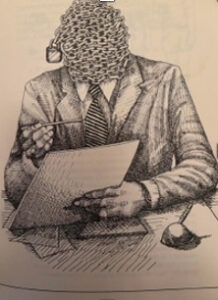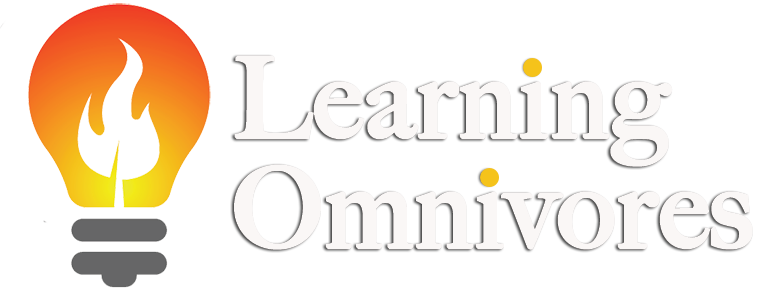Choose Chains or Change
“Change almost never fails because it’s too early.
It almost always fails because it’s too late.”
Seth Godin
Michael Ayers, retired 3M leadership trainer, told me years ago, ‘if people do not believe change is possible, new ideas most likely will fail.’ It is as true today as it was over twenty years ago. How many panaceas have come and gone with no change? How many people have been depleted of energy, in part, because those in the system decide it is easier to ‘go along’ to ‘get along?’
“If you don’t like change, you’re going to like irrelevance even less”
General Eric Shinseki
There are chains that limit our creativity, problem solving, and mindsets. Leaders and organizations continue to look for silver bullets; my experience tells me there are no silver bullets. Change is hard work and takes focus and commitment. Life, and the environment, must constantly adapt to changing landscapes. This is a natural order of evolving, adapting, and re-creation. It is adaptability that helps us survive and thrive.
“Nature Bats Last”
Peter Senge
Another point is what Susan Ohanian (1999) wrote about in her book, One Size Fits Few. There is more diversity within segments of society than between them; within each culture there are more differences. Parents want the best for their offspring no matter their ethnicity, race, culture, etc. An example to consider is the term ‘best practice.’ My question always is, “for whom?” I suggest we need multiple best practices to address learning for staff, students, and community.
Chains
“I not only use all the brains that I have, but all that I can borrow”
Woodrow Wilson

As a long-time educational leader, I have seen many initiatives come and go. I remember in Minnesota, the Profiles of Learning; legislators and state department said, ‘it is never going away.’ OK, how many remember it? Gone within three years after lots of money and some people dying on the sword trying to implement the process. A new book, a new theory, and new research… a word to the wise, you can find research to support anything and now with internet access you can find a wealth of material. It doesn’t have to be true; just post it! (no pun intended). Some will believe it.
So, what are the mental locks in our thinking that keep us stuck? The book, Excellent Sheep has a few elements of why we blindly follow.
“Insanity is doing the same thing over and over and expecting different results”
Albert Einstein
- We believe in myths.
Einstein also said, ‘you can’t solve problems with the same kind of thinking that created the problem.’ William Deresiewicz (2015), in his book Excellent Sheep, talks about the elite colleges and the myth that to succeed at high levels a student needs a degree from an Ivy League school. Of course, a good education can be acquired in those schools as well as others. A great deal depends on the efficacy of the learner and the skillset of the learning guides. Ask Bill Gates and Mark Zuckerberg how Harvard worked out for them.
- Don’t show fear.
Deresiewicz reports there is a ‘Stanford Duck Syndrome’ at play; people appear to be in control and calm on the surface while paddling like crazy under the water. Courage and humility to acknowledge we don’t know something, or that we want to get better, is the first step in learning. In AA 12 Step programs, Step 1 is admitting we are powerless. I call it the AAA model: acknowledge, accept, and take action to get a different outcome. Then change becomes possible. “Every system is perfectly designed to get the results it gets” W. Edwards Deming
- Go with the Flow.
At times this can put us at odds with our own values and integrity. To paraphrase Deresiewicz, each misguided belief that you can make the world safe for colleagues and children is an important goal. Deresiewicz has a quote, “Education isn’t something you consume; it’s an experience that you have to give yourself over to.” Learning is an experience. Some choose it, some run from it. Systems and nature do not care which you choose, they will continue to move forward. Consider this one: Learning is Change – Change is Learning.
- We are stuck in mental straightjackets.
Fixed Mindset is a belief popularized by Carol Dweck. If the fear of failure or making a mistake is the priority, people often choose the safe direction versus using mistakes as learning and moving to the next idea. One of Richard Sheridan’s, CEO at Menlo Innovations, motto is, “Run the Experiment.” Find out if an approach works. I add an additional step called the ‘Reverse Las Vegas Effect.’ If it works, tell everybody. If it doesn’t work, tell everybody. I highly recommend Amy Edmondson’s newest book, The Right Kind of Wrong. It is full of ways to use mistakes as learning opportunities.
- Don’t rock the boat.
People don’t want to look foolish. They also want to protect what they have. So, stay the course, don’t take risks, stay silent, and by all means, don’t advocate for a new way of thinking. It might make a supervisor upset. This is where leadership is so important. Model what you want. Marshall Goldsmith and Frank Wagner developed Stakeholder Centered Coaching. It is a great model and resulting in 95% success rate for those leaders who have courage, humility, and discipline. Goldsmith (2007) wrote “What Got You Here Won’t Get You There.” The premise is that some of the things that were successful in the past might not be as effective in the future. The question then is, ‘how do you keep learning as the environment changes?’
Change
“Instead of training ‘leaders’, how about training citizens? How about training thinkers.”
A quote in Excellent Sheep.
Often our discussions focus on what we don’t want. As a leadership coach, I understand that people want to vent and tell their story. At some point asking, ‘what do you want?’ or ‘what is the best possible outcome?’ is necessary to move from talk to action. Taking one affirmative step can lead to a second, third, etc.
Michael Ayers introduced me to a formula for from Richard Beckhard. D x V x F > R = C.
- D is dissatisfaction with the status quo or current reality
- V is a vision or preferred future
- F is first steps that leads to some action toward the change
- Once those three coalesce and is greater than “R” (resistance) “C” (change) can occur.
A legendary Stanford course applies design thinking to the “wicked” problem of planning life and career. When approaching big decisions, the professor recommends using these power tools of his trade:
- Embrace curiosity – It’s he mindset giving you the energy to overcome fear &
procrastination
- Prototype your way forward, through conversations and experiences
- Reframe as a way to get unstuck
Polarity Partnerships offers another helpful process. As with most issues involving human beings, it is not an either/or proposition. See the post https://learningomnivores.com/rules/the-tyranny-of-or/ This strategy of Polarity Partnerships is a strong process when two or more good ideas come together. The requirement to be a polarity is:
- Interdependent
- Ongoing
Think about breathing as a metaphor. We must inhale and exhale; hopefully it is ongoing. Barry Johnson’s newest book, And: Making a Difference by Leveraging Polarity, Paradox or Dilemma is a great resource with many current examples.
The fact remains anyone who is willing to learn and apply can be successful.
“Ideals are psychological goals necessary to the health of the mind.”
Alfred Kazin
References:
Deresiewicz, William. (2015). Excellent Sheep: The Miseducation of the American Elite and the Way to a Meaningful, New York: Free Press
Dweck, Carol. (2006). Mindset. New York: Ballantine Books.
Edmondson, Amy. (2023). Right Kind of Wrong: The Science of Failing Well. New York: Atria
Goldsmith, M. (2007). What got you here won’t get you there. New York: Hyperion
Johnson, Barry. (2020). And: Making a Difference by Leveraging Polarity, Paradox or Dilemma. Volume One. Sacramento, CA: Polarity Partnerships.
Ohanian, Susan. (1999). One Size Fits Few. Portsmouth, NH: Heinemann
Pacanowsky, Michael. (1`996). Team Tools for Wicked Problems. Organizational Dynamics, 23(3), 36–51
Senge, Peter. (1990). The fifth discipline. New York: Doubleday Current.
Von Oech, Roger. (1998). Whack on the Side of the Head. New York: Warner Books

February 20, 2025 @ 5:31 pm
IkPU2Q0kMt7
February 21, 2025 @ 7:49 am
evQpsTBXxiR